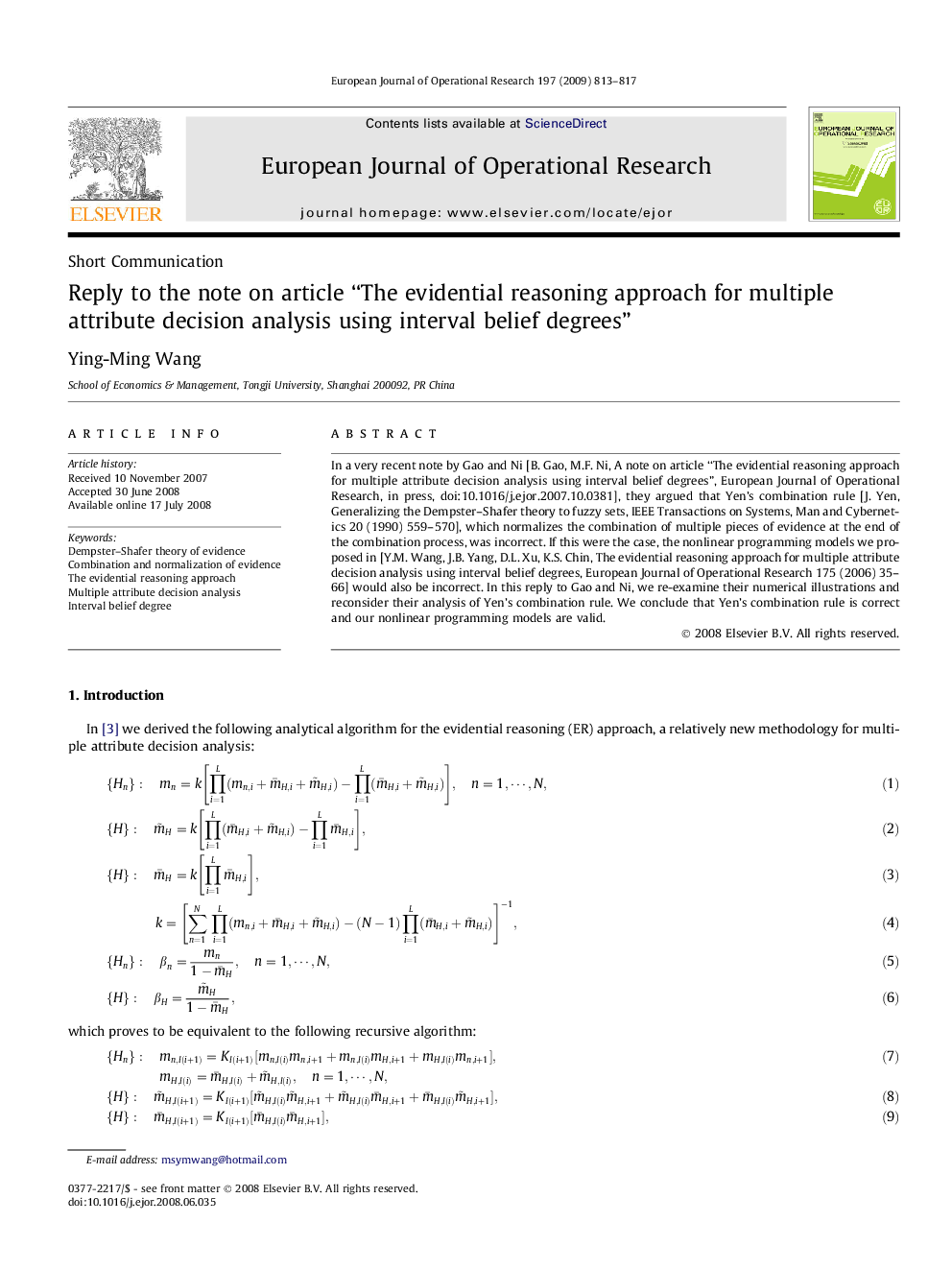| کد مقاله | کد نشریه | سال انتشار | مقاله انگلیسی | نسخه تمام متن |
|---|---|---|---|---|
| 481532 | 1446145 | 2009 | 5 صفحه PDF | دانلود رایگان |

In a very recent note by Gao and Ni [B. Gao, M.F. Ni, A note on article “The evidential reasoning approach for multiple attribute decision analysis using interval belief degrees”, European Journal of Operational Research, in press, doi:10.1016/j.ejor.2007.10.0381], they argued that Yen’s combination rule [J. Yen, Generalizing the Dempster–Shafer theory to fuzzy sets, IEEE Transactions on Systems, Man and Cybernetics 20 (1990) 559–570], which normalizes the combination of multiple pieces of evidence at the end of the combination process, was incorrect. If this were the case, the nonlinear programming models we proposed in [Y.M. Wang, J.B. Yang, D.L. Xu, K.S. Chin, The evidential reasoning approach for multiple attribute decision analysis using interval belief degrees, European Journal of Operational Research 175 (2006) 35–66] would also be incorrect. In this reply to Gao and Ni, we re-examine their numerical illustrations and reconsider their analysis of Yen’s combination rule. We conclude that Yen’s combination rule is correct and our nonlinear programming models are valid.
Journal: European Journal of Operational Research - Volume 197, Issue 2, 1 September 2009, Pages 813–817